The timing is crucial for a successful sowing. We have compiled for you what needs to be sown and when.

Harvesting fresh vegetables from the garden all year round has become the ideal. But the variety of species and the ideal cultivation time make gardening an organizational masterpiece. The right time to sow our vegetables is a crucial factor in determining when we harvest can determine whether the vegetables can ripen properly in our part of the world and, last but not least, also about the quality. While some plants take extremely long periods of development, others tend to flower prematurely in the summer, such as the Chinese cabbage. But keeping track of all plants and their sowing dates is easier said than done. The remedy is a sowing calendar, which shows you at a glance which vegetables need to be sown.
contents
- Sowing calendar for January
- Sowing calendar for February
- Sowing calendar for March
- Sowing calendar for April
- Sowing calendar for May
- Sowing calendar for June
- Sowing calendar for July
- Sowing calendar for August
- Sowing calendar for September
- Sowing calendar for October
- Sowing calendar for November
- December sowing calendar
The gardener's work has no breaks, because a wide variety of vegetables can be preferred or sown directly at any time of the year. The planning for this often takes more time than the sowing itself. In our sowing calendar you can find out when which species are best sown and preferred.
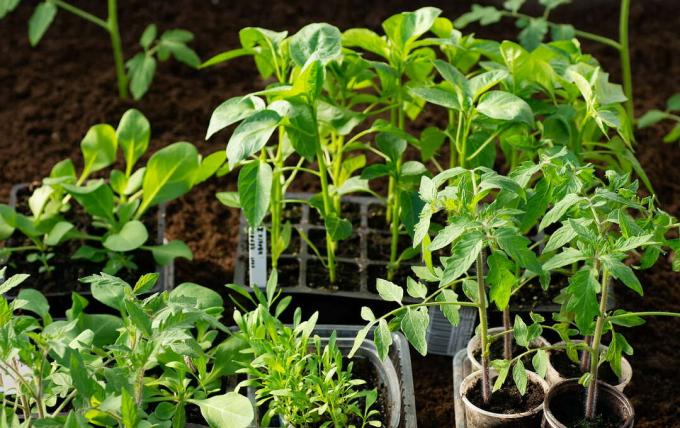
Sowing calendar for January
Cold-tolerant vegetables can be sown in the greenhouse as early as the first month of the year. The growth rate cannot of course be compared with sowing in the warm season, but it is still worthwhile to green the greenhouse, both for the soil and for the plate. The Lamb's lettuce (Valerianellalocusta) as particularly robust and vigorous leafy vegetables. They also thrive under glass in winter spinach (Spinaciaoleracea), Winter cress (Barbareavulgaris) and winter purslane (Claytonia perfoliata). Salads like Lollo Rosso and Bionda (Lactuca sativa var. crispa) or lettuce (Lactuca sativa var. capitata) are brought forward on the windowsill as early as mid-January, and then moved to the greenhouse from March. Even Kohlrabi (Brassica oleracea var. gongylodes) and radish (Raphanus sativus) can be sown in the house from mid-January to grow young plants. Sprouts of cress (Lepidium sativum), arugula (Erucasativa) and other types are of course also in season in the kitchen in January and offer healthy and varied food all year round.

Summary of the January sowing calendar:
- On the windowsill: salads, kohlrabi, radish, sprout vegetables, cress
- In the greenhouse: winter purslane, winter cress, lamb's lettuce, spinach
Sowing calendar for February
The slow-growing fruit vegetable season starts in February. From mid-February Eggplant (Solanummelongena), paprika and Chillies (Capsicum sp.) are germinated in a warm place. The long culture of artichokes (Cynara scolymus) also makes early pre-cultivation mandatory from mid-February. In addition, leafy vegetables such as spinach can be grown in the greenhouse and harvested continuously. Endive (Cichorium endivia), Romaine lettuce (Lactuca sativa var. longifolia), Iceberg lettuce (Lactuca sativa) and Seed onions (Alliumcepa) are sown in the greenhouse. Germination can take a long time at low temperatures, but can be accelerated with the help of covers such as fleece or mulch materials.
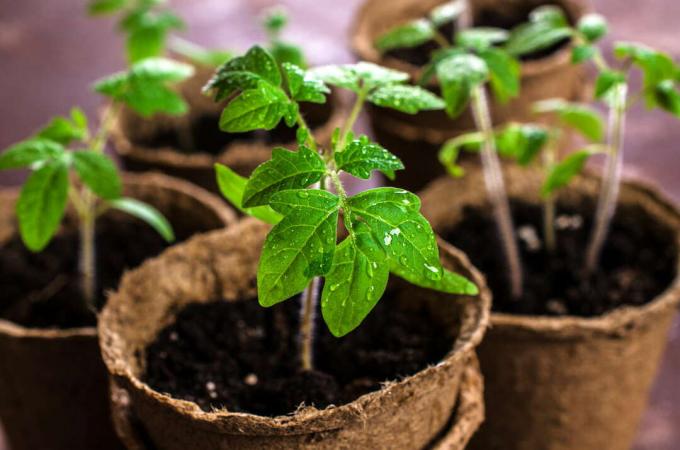
Summary of the sowing calendar February:
- On the windowsill: eggplant, chilli, paprika, artichoke
- In the greenhouse: salads, endives, seed onions, spinach
Sowing calendar for March
March, the harbinger of spring, is the ideal month for the fast-growing tomatoes (Lycopersiconesculentum) and Andean berries (Physalis peruviana) and grow small plants on the windowsill. The first root vegetables such as parsnips (Pastinacasativa), Parsley roots (Petroselinumcrispum subsp. tuberosum), Oat root (Tragopogon porrifolius), Salsify (Scorzonera sp.) and Carrots (Daucuscarota) sown. Good neighbors to the umbelliferae are carrots, parsnips and parsley roots, which are also sown in March Spring onions (Allium fistulosum), leek (Allium porrum) and seed onions. The more robust legumes like peas (Pisumsativum) and Broad bean (Vicia faba) thrive wonderfully in the bed as early as March.

radish (Raphanus sativus var. sativus) have the seed season from the middle of the month to the beginning of September, as a subsequent crop you can harvest continuously. For leafy vegetables such as salads, lamb's lettuce and the Garden report (Atriplexhortensis) can now be sown outdoors until the beginning of September. The cabbage plants are now also looking forward to their appearance: Red cabbage, White cabbage and savoy (Brassica oleracea convar. capitata), as cauliflower (Brassica oleracea var. botrytis) and kohlrabi (Brassica oleracea var. gongylodes) now migrate into the open air, while the heat-loving broccoli (Brassica oleracea var. italica) prefer to develop in the greenhouse. On the windowsill or in the greenhouse, the Fennel (Foeniculum vulgare), celery root (Apiumgraveolens var. rapaceum), Vegetable artichoke (Cynara cardunculus), New Zealand spinach (Tetragoniatetragonioides) and Swiss chard (Beta vulgaris subsp. vulgaris) should be preferred. Also the Tigernuts (Cyperusesculentus) can be grown into strong young plants from March, which can then move outdoors from mid-May. The "sowing" is not done with seeds, but by means of the small root rhizomes.
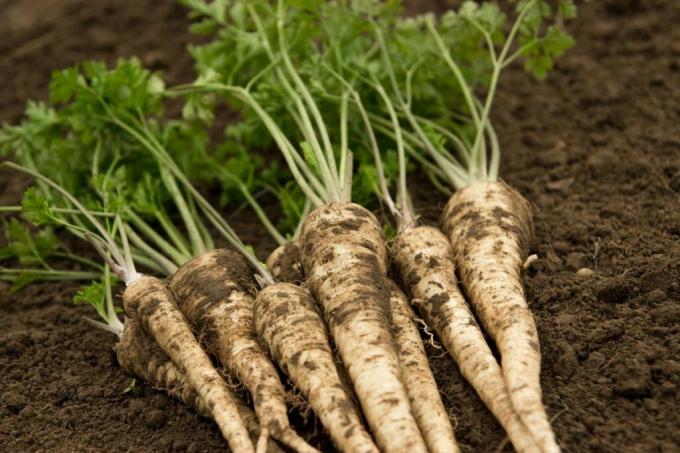
Summary of the sowing calendar March:
- On the windowsill: tomato, Andean berry, vegetable artichoke, tiger nut
- Outdoors: carrot, parsnip, root parsley, oat root, black salsify, seed onion, Spring onions, leeks, peas, field beans, head cabbage, cauliflower, kohlrabi, radishes, lamb's lettuce, Salads, garden logs
- In the greenhouse: broccoli, fennel, celeriac, Swiss chard, New Zealand spinach
Sowing calendar for April
In April, the sowing of the cucurbits begins, which are planted out after the ice saints in mid-May. You are now allowed to sit on the warm window sill Melons (Cucumismelo), Cucumber (Cucumissativus), Pumpkins (Cucurbita sp.) and zucchini (Cucurbitapepo subsp. pepo) germinate. Also vegetable or popcorn corn (Zeamays) are happy about the pre-cultivation in the house, as well as Runner beans (Phaseolusvulgaris) and the warmth-loving Nasturtiums (Tropaeolum sp.). Brussels sprouts (Brassica oleracea var. gemmifera) and palm kale (Brassica oleracea var. palmifolia) are now preferred outdoors, as well as the Beetroot (betavulgaris). The turnip (Brassicarapa subsp. rapa var. majalis) can now be sown continuously directly into the bed from the beginning of April until June.

Summary of the April sowing calendar:
- On the windowsill: melon, cucumber, pumpkin, zucchini, corn, runner beans, nasturtiums
- Outdoors: Brussels sprouts, palm kale, beetroot, turnip
tip: Also a phenological calendar helps to find the right time to sow your vegetables. You can find out exactly how this works in our special article.
Sowing calendar for May
The beautiful month of May should be used to sow vegetables with a late harvest time in autumn and into winter. The turnip (Brassica napus subsp. rapifera) is sown directly into the bed from mid-May after the last frosts, as well as the fire bean (Phaseolus coccineus) as well as French and runner beans. The popular winter vegetable Kale (Brassica oleracea var. sabellica) is now in the sowing season and is looking forward to a warm spot in the cold frame. As a leafy vegetable, you can sow salads such as summer purslane (Portulacaoleracea var. sativa), which can then be harvested into autumn.

Summary of the May sowing calendar:
- Outdoors: turnip, French bean, runner bean, fire bean, summer purslane, salads
- In the cold frame: kale
tip: A sufficient supply of nutrients is important for aromatic vegetables. For this reason, a dose of primarily organic slow-release fertilizer should be incorporated when planting out strongly consuming vegetable plants. Our Plantura Organic tomato fertilizer is perfectly tailored to the needs of vegetables and is also kind to the environment.
Sowing calendar for June
In June, crops are sown that tend to shoot and bloom early, such as Sugar Loaf and Radicchio, both subspecies of chicory (Cichorium intybus var. foliosum). Also cabbage like Pak choi (Brassica rapa subsp. chinensis) and autumn varieties of cauliflower are sown directly in the bed in June. There is still time for the subsequent crops of radishes, salads and carrots in summer.

Summary of the June sowing calendar:
- Outdoors: sugar loaf, radicchio, pak choi, autumn varieties of cauliflower, radishes, salads, carrots
Sowing calendar for July
When sowing in the midsummer month of July, the focus is already on the approaching autumn. Autumn and winter radishes, such as the black radish (Raphanus sativus var. Niger) and the winter hedge bulbs should now have a place in the bed. Even the Chinese cabbage, which tends to shoot when the day is long (Brassica rapa subsp. pekinensis) can now be sown directly in the field.
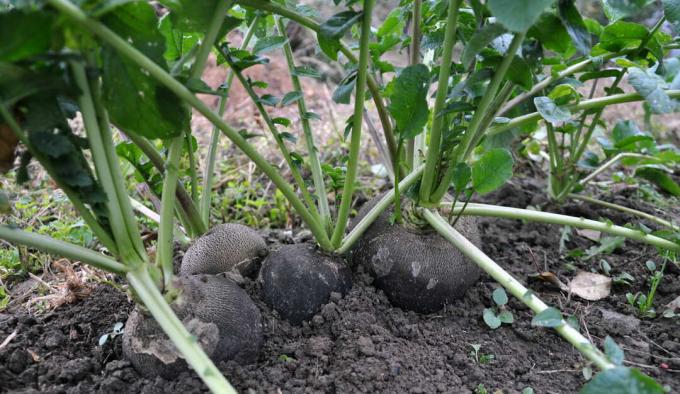
Summary of the July sowing calendar:
- Outdoors: autumn and winter radish, winter hedge onion, Chinese cabbage, salads, radishes
Sowing calendar for August
Like July, August with its decreasing day length is ideal for budding autumn crops such as winter hedge onions, winter radishes and Chinese cabbage. Vegetables grown in batches such as lamb's lettuce and radishes are still in season.

Summary of the August sowing calendar:
- Outdoors: autumn and winter radish, winter hedge onion, Chinese cabbage, salads, radishes
Sowing calendar for September
The last batches of salads and radishes are now entering the bed. Late varieties of cauliflower, savoy cabbage and white cabbage can still be sown, as can winter hedge onions and mustard. Even now sown, fast-growing salads will be ready for harvest before winter. The garden is particularly happy about a late flowering mix or even Bee pasture on open areas, for example with phazelia (Phacelia sp.).
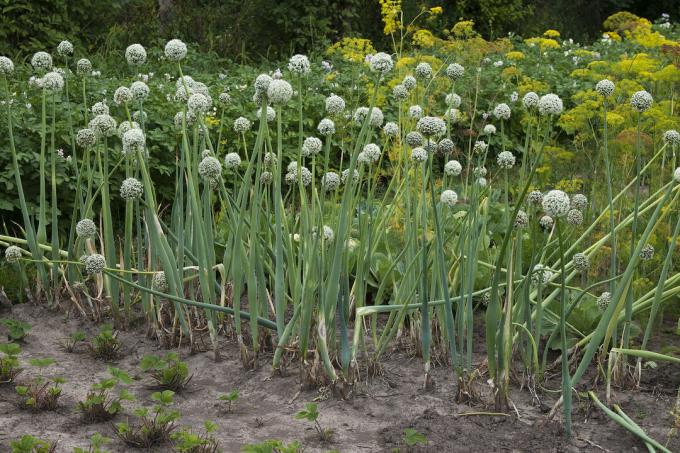
Summary of the September sowing calendar:
- Outdoors: winter hedge onions, cauliflower, white cabbage, savoy cabbage, mustard, salads, radishes, bee willow and late flowering mixtures
Sowing calendar for October
In the greenhouse there is slowly enough space for wintering leafy vegetables such as spinach, lamb's lettuce and winter purslane. Leaf lettuce and lettuce can also be sown in the greenhouse in October. In the open field, the application of winter greening is recommended for fallow areas, which can remain in place until spring. Robust Asian salads and leaf mustard like Mizuna (Brassicarapa var. japonica) can also go outside. They are much more cold tolerant than one would think and can even hibernate outside.
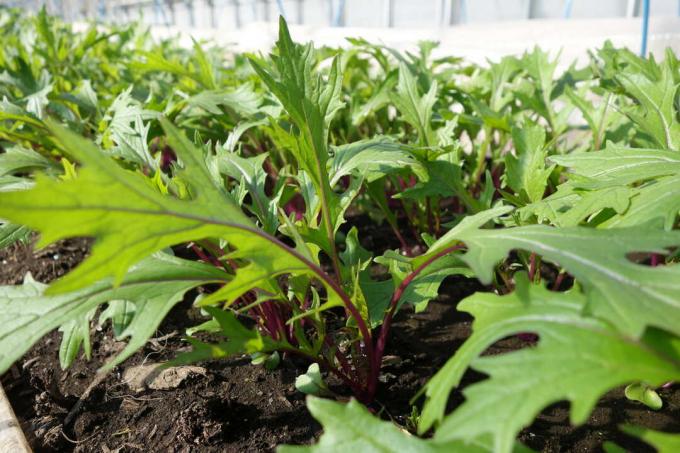
Summary of the October sowing calendar:
- Outdoors: Asian salads, leaf mustard, winter greenery
- In the greenhouse: salads, spinach, lamb's lettuce, winter purslane
Sowing calendar for November
The approaching winter and the reduced daylight are suitable for sowing crops that are not supposed to germinate until next spring. Plants that do not sprout until next spring are now sown in the bed, for example the Chervil (Chaerophyllum bulbosum), Parsnips, early carrots or root parsley. The well-known winter crops and Asian cut salads can still be sown in the greenhouse.

Summary of the November sowing calendar:
- Outdoors: chervil, parsnip, early carrots, root parsley
- In the greenhouse: winter purslane, lamb's lettuce, spinach, Asian salads, leaf mustard
December sowing calendar
December as the darkest month of the year is only suitable for sowing winter purslane and lamb's lettuce in the greenhouse. Both crops take a long time to germinate, but can be harvested from February in frost-free weather. The cress and other microgreens on the window sill bridge the cold time very well.
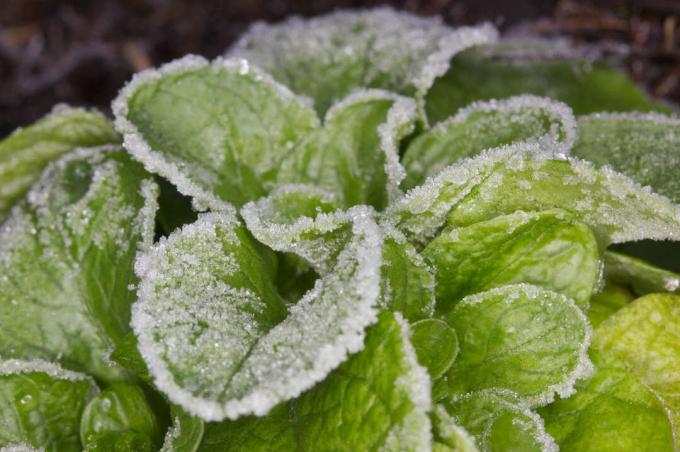
Summary of the December sowing calendar:
- In the greenhouse: winter purslane, lamb's lettuce
- On the windowsill: cress, sprouts, microgreens
If you want to adjust your diet according to the season in addition to sowing, you will find one here Seasonal calendar for the currently ripe fruits and vegetables.
